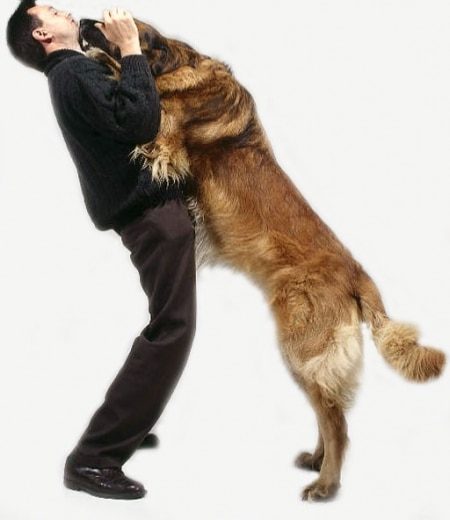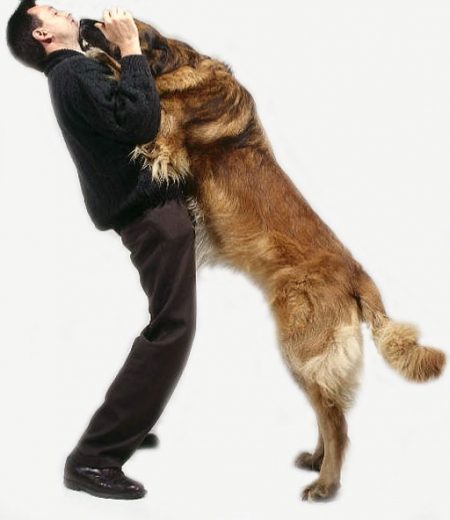

The Tao of “No”
Dogs must think it hilarious that we humans have taken to avoiding the word "no" around them, as if the very mention of a negative might crush their egos, and leave them downhearted, bereft, psychically wounded. I’m sure they snicker among themselves and think, whoever did away with this consequence thing- good on ya, mate!
Truth is, dogs say yes and no to each other, and to us, all the time. When a young dog gets too cheeky with a more established dog, what happens? The established dog backs him off with a stare, a growl, a nip, or sometimes a chase around the yard. If a frolicking Lab gets too chummy with an antisocial rat terrier, the terrier will read that bon vivant the riot act, and quickly teach her boundary what-fors. It’s dog-speak; they tell each other yes and no all the time.
Go to a busy dog park and watch interactions. Butt-sniffing, play posturing, smiles and frowns, growls and flashing fangs, rebuffs, friendships lost and found, wrestling matches- all manner of positive and negative relations that lead to social detente. It’s called communication. It’s how they learn what is appropriate in their varied world.
Unfortunately, some of us have stopped teaching appropriateness to our dogs.
Every animal on planet earth experiences positive and negative events in its life. Whether fair or not, they learn from these, adapting lifestyles and behavior in the process. Why shouldn’t our dogs? If you doubt that dogs were meant to learn from contention and adversity, consider the function of the initial fear imprint stage, an ancient, well-defined period of psychological development in a dog’s life. From the eighth to the eleventh week of life, if something scary occurs to a domestic puppy, that event (thunder, bear attack, tail-pulling child, alien invasion) can cause it to develop a lifelong phobia toward said event. It’s why you should take care not to expose a puppy in this age range to loud, sudden, or taxing stimuli.
Why do dogs have this distinct psychological mechanism hard-wired in? It’s a survival mechanism adapted by canids in the wild since time immemorial (oh no- he’s comparing dogs to wolves!). A wolf, coyote or dingo pup must learn very early on to distinguish curiosities from what is lethal; if a cougar for instance charges while that pup is in it’s fear imprint stage, the experience imprints on the babe, who will be leery of cougars for the rest of its life. This improves the juvenile’s odds of surviving to maturation. It is a traumatic experience that helps the canid. More importantly, it is an effective, natural mechanism, based upon contention.
If a dog is hard-wired to profit from both positive and negative experiences, then why should we, their mentors, be loathe to ever challenge them? Which revisionist came up with the idea that a dog should never experience contention?
I am not talking about inculcating fear, or cruelty (in my opinion, a term that has been unfairly redefined to include just about everything). Doing harm to a dog, treating it with contempt, never rewarding or building confidence- these things ruin dogs. But teaching a dog "no" does not. Teaching the concept of "no" helps a dog, by defining the acceptable from the unacceptable, and teaching boundaries.
The idea that you can modify a dog’s misbehavior solely through timely, copious treating, ignoring, and gratuitous praise is a fiction promulgated by those who, over the last decade or so, have applied fuzzy child (and even cetacean) psychology techniques to dogs, in an effort to take economic advantage of the growing trend to anthropomorphize. Frankly, it sells well to those who define dogs as surrogate kids, mates, or fashion accessories. Well, dogs are not children, or dolphins, or elephants, or rats. They are dogs- the closest companions we humans have ever had.
Example. You have a dog who incessantly jumps up on people, including you. If it’s a big dog, this could result in injury to a child or older person. It has to be stopped quickly. Current "non-contentious" theory says to turn away from the jumper and ignore him, effectively taking away the dog’s motivation for jumping. The behavior will then simply extinguish itself in time.
This rarely works, and often makes it worse. I’ve had to retrain literally hundreds of jumpers initially exposed to this "turn-and-ignore" method, interpreted by a dog as a sign of capitulation. The dog isn’t jumping up because of some perceived benefit he’s getting; he’s jumping up because he did it as a pup, and was never dissuaded from doing it. He likes it now because it’s in his repertoire, and because it’s a way to assert. Period. It’s like a child who constantly interrupts the adults, and is never taught to politely wait her turn to speak. If those adults simply leave the room when the kid interrupts, what does she learn? Only that she can manage adult interactions, and dominate the conversation.
The jumping behavior stays in the dog’s repertoire of behaviors, and will be used on others, whenever he feels it is necessary to do so. Averting the behavior with ignoring, or with a frantically offered treat, does nothing to create the idea in the dog’s mind that this is not an acceptable behavior. Temporarily diverting attention is not the same thing as teaching.
At the dog park, if one dog jumps up onto another, and the jumped-upon dog turns and walks away, the jumper will almost always follow and continue jumping on the dog. Other dogs, sensing weakness, will sometimes even join in. It is what they do. The concept that a human being turning and ignoring the behavior will effectively stop the behavior- well, it’s naïve, and disrespectful of who dogs are.
I once interviewed a positive-only devotee for a possible training position at a large dog daycare facility, and set her up with a big jumping American Bulldog, to see how she would handle him. Armed with a clicker and a belt bag filled with liver treats, she first tried to treat him into a "sit," and was promptly knocked to the ground. She tried again, this time turning her back to "ignore and extinguish." Face plant again.
I helped her up, then stepped onto the end of the dog’s leash and looked square at him; when he tried to jump up on me, he ended up correcting himself, then defaulting into a sitting position, a bewildered look on his goofy, lovable face. I praised him, then repeated the process. Within two minutes, the jumping stopped with me, and then was eventually generalized to the owners and other daycare workers.
She did not get the job.
That dog did not have the right to throw his big bulk onto anyone. He needed to learn that. He did. Eventually, "sit-to-greet" was taught to him, but not until everyone knew to step on his dangling leash first.
The point is, you mustn’t think of dogs as mindless automatons without independent intent. They often make decisions that have nothing to do with what they have been taught or not taught, or what they have experienced. They often invent behaviors all by themselves, some of which need to be modified. Teaching "no" will help you do that.
I have a fifteen year-old dog named Flavio, a shepherd/chow mix, gentle and sweet. But in his old age, he has taken to sneaking up on the sofa when no one’s looking. The geriatric minx! If I spy him from a distance quietly heading for the sofa, I will calmly but convincingly say "NO," while looking square at him. He knows exactly what it means; he turns, looks at me, then sheepishly heads over to his own bed to rest. He thinks can’t blame an old guy for trying, while I say "good boy." That’s it; no theatrics, no redirection. He understands "no." When I am gone, I deny just him access to the sofa area. At his advanced age, I am not going to put Flavio through any lengthy behavior mods; I’ll just tell him "no."
"Good" and "no" are crucial words for a dog to know. They define the acceptable, and the unacceptable. You have the right to define these terms.
I can literally steer a dog around a yard using just those two words, in combination with body posture and tone. They are self-explanatory to dogs, who understand these words’ meanings simply through how you use them. No need to associate them with desirables or undesirables; they just get it, from the circumstance, and from your presentation. Dogs are not lab rats; they are intuitive partners who get humans the way we used to get them.
If your dog is about to initiate a potentially bad behavior- maybe she’s about to steal a child’s hot dog- and you say "no" at the right moment, using the right body posture and tone, she will catch herself and back off. You don’t even need to use "no;" you can use "chh!" or "ack!" or a clap, or anything, really. "Leave-it" is the same type of remedial command; not a positive, but certainly not punitive. "Off," and even "Drop it" can be thought of as corrective commands used in reaction to a dog’s misbehaviors (again, as defined by you). Really, any command you give that the dog might not want to perform should be thought of as remedial, and as a test of your abilities as a trainer and owner. Remember, the truest test of a dog’s behavior is if she will comply with a request from you, even when it is obvious that she desires to do something else.
Your dog is not a fragile flower who will wilt at the slightest sign of disagreement. In fact, she needs occasional constructive conflict to learn, and mature. Just realize that you are the one carefully deciding if and when that discipline is needed. That’s part of being a good owner. She needs praise too, and friendship, and loyalty, and experience, and love. But she needs to know right from wrong, to fit in, and prosper. "No" will help with that. It balances out "Good." It yings the canine yang.
Join the newsletter and never miss out on dog content again!
"*" indicates required fields
By clicking the arrow, you agree to our web Terms of Use and Privacy & Cookie Policy. Easy unsubscribe links are provided in every email.